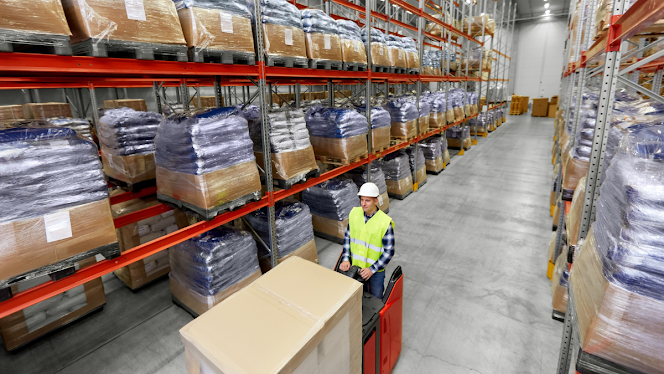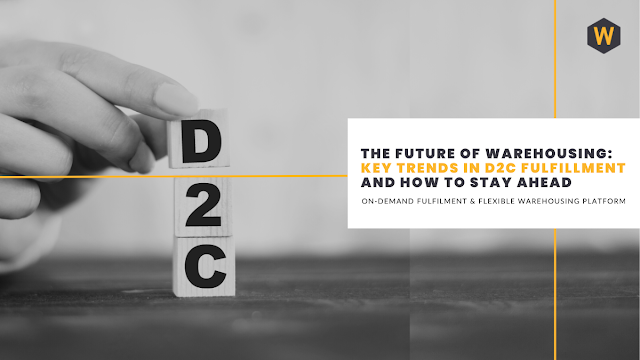Will The Dark Warehouse Ever Become Reality? Perhaps ...
 |
| A photo of Dark Warehouse in India |
There's been a lot of buzzes lately about the possibility of a "dark warehouse," a highly automated and technologically advanced fulfillment center that operates entirely in darkness. The idea is that with no need for lighting, the facility can be more energy-efficient and better equipped to handle high volumes of orders with minimal human intervention. But is this concept feasible? In this article, we'll look closer at the potential benefits and drawbacks of the dark warehouse and explore whether it's likely to become a reality anytime soon.
What is a Dark Warehouse?
A dark warehouse is a highly automated distribution centre that uses robotics, artificial intelligence, and other cutting-edge technologies to handle the entire order fulfilment process in complete darkness. The idea is that with no need for lighting, the facility can save on energy costs and operate more efficiently, with robots and machines doing most of the work. The dark warehouse concept is still in the early stages of development, and many challenges must be overcome before it becomes a reality.
The Potential Benefits of a Dark Warehouse
The concept of a dark warehouse in India offers several potential benefits, including:
Energy Savings
The most significant benefit of a dark warehouse is the potential for energy savings. Lighting accounts for a significant portion of a warehouse's energy usage, and eliminating the need for lighting can result in substantial cost savings over time.
Increased Efficiency
By relying on robots and other automated systems, a dark warehouse can operate more efficiently than a traditional warehouse that relies on human workers to pick up and pack orders. Automated systems can work faster and more accurately than humans, resulting in faster order processing times and fewer errors.
Improved Safety
With fewer human workers on the floor, accidents and injuries are less likely. Additionally, robots and other automated systems can be programmed to follow strict safety protocols, further reducing the risk of workplace accidents.
The Potential Drawbacks of a Dark Warehouse
While the concept of a dark warehouse offers several potential benefits, some potential drawbacks need to be considered, including:
Technological Challenges
The technology required to create a fully automated dark warehouse is still in the early stages of development. Many technical challenges must be overcome before such a facility can become a reality. For example, robots and other automated systems must be able to navigate the warehouse floor without lighting, which requires sophisticated sensors and mapping technology.
Job Losses
A dark warehouse would rely heavily on automation, which could result in significant job losses for human workers. While some jobs would still be required to maintain and repair the automated systems, many traditional warehouse jobs, such as order picking and packing, would be automated.
Security Concerns
A dark warehouse would be more vulnerable to security threats than a traditional one. With no lighting, it would be easier for unauthorized individuals to enter the facility undetected. Additionally, the lack of lighting could make monitoring the facility and detecting potential security breaches more difficult.
Will The Dark Warehouse Ever Become Reality? Perhaps ...
While the concept of a dark warehouse is still in the early stages of development, such a facility could become a reality. However, many challenges need to be overcome before that can happen. Some of the key factors that will determine whether the dark warehouse becomes a reality include:
- Technological advancements: As the technology required to create a dark warehouse continues to improve, the feasibility of such a facility will increase.
- Economic viability: A dark warehouse needs to be economically viable, with the potential for cost savings that outweigh the initial investment.
- Social acceptance: The idea of a dark warehouse may be rare among workers or the general public.
The Future of Warehousing
The warehousing industry is constantly evolving, with new technologies and innovations changing how warehouses operate. The concept of a dark warehouse is just one example of how technology is being used to make warehouses more efficient and cost-effective.
Other trends that are shaping the future of warehousing include:
Robotics and Automation
Robotics and automation are already playing a significant role in modern warehouses, and this trend will continue. With the ability to work faster and more accurately than humans, robots and other automated systems are becoming increasingly popular for order-picking and packing tasks.
Artificial Intelligence
Artificial intelligence (AI) is also becoming more prevalent in the warehousing industry, with the ability to optimize warehouse layouts and improve inventory management. AI-powered systems can also help to predict demand and optimize warehouse processes to improve efficiency.
Sustainable Warehousing
Sustainability is becoming a major concern for many businesses, and the warehousing industry is no exception. From using renewable energy sources to reducing waste and emissions, there are many ways that warehouses can become more sustainable.
Augmented Reality
Augmented reality (AR) technology is being used to improve warehouse operations, providing workers with real-time information and instructions. AR can also help workers visualize and interact with inventory, making it easier to locate and pick orders.
FAQs
What is a dark warehouse?
A dark warehouse is a highly automated distribution centre that operates in complete darkness, using robotics, artificial intelligence, and other cutting-edge technologies to handle the entire order fulfilment process.
Why would a warehouse operate in complete darkness?
Operating in complete darkness eliminates the need for lighting, resulting in significant energy savings over time.
What are some potential benefits of a dark warehouse?
The potential benefits of a dark warehouse include energy savings, increased efficiency, and improved safety.
What are some potential drawbacks of a dark warehouse?
Potential drawbacks include technological challenges, job losses, and security concerns.
Will dark warehouses become a reality anytime soon?
While the concept of a dark warehouse is still in the early stages of development, such a facility could become a reality.
What are some other trends shaping the future of warehousing?
Other trends include robotics and automation, artificial intelligence, sustainable warehousing, and augmented reality.
Conclusion
The concept of a dark warehouse is intriguing, with the potential for significant energy savings and improved efficiency. However, many challenges must be overcome before such a facility becomes a reality. As technology improves, dark warehouses become more feasible and cost-effective. Still, whether the idea will gain widespread acceptance among workers and the general public remains to be seen.
Ultimately, the future of d2c ecommerce warehousing will likely be shaped by a combination of technology, economic factors, and changing societal attitudes. While the concept of a dark warehouse may or may not become a reality, it's clear that the warehousing industry will continue to evolve and adapt in response to changing needs and opportunities.



Comments
Post a Comment